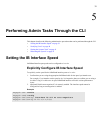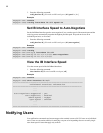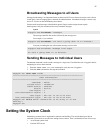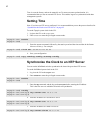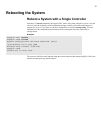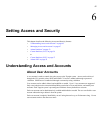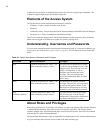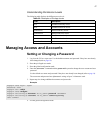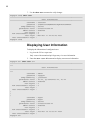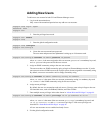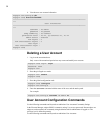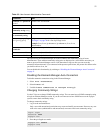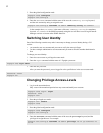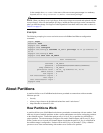
46
In order for users to initiate an administration session, the User has to supply login credentials. The
credentials supplied depend upon the interface being used.
Elements of the Access System
The Topspin access system associates the following key elements:
• Username - Creates a unique username in the system.
• Password
• Community String - Unique string used for the Element Manager and SNMP Network Managers.
• Privilege Level - Allows combinations of different privileges.
The CLI uses username and password. The Element Manager uses the community string to identify
which user has logged in. Granular access rights are given by privilege level.
Understanding Usernames and Passwords
CLI users enter standard username and password information to begin a CLI session. By default, you
may log on as one of three users,
super
,
admin
, or
guest
. The user names are shown in the table
below.
About Roles and Privileges
Roles allow granular levels of privileges. For example, you can create separate Fibre Channel, Ethernet,
or InfiniBand administrators, who only have access to specific subsystems. The Topspin system
combines multiple roles with read and read-write access for flexible control. These roles are enforced
with both the CLI and the Element Manager.
The unrestricted administrator (super) is responsible for assigning these roles. Network administrators
are given read-only and read-write access to each of the three network types.
Table 6-1: Default User Names, Passwords, and Privileges
User Name Default Passwords Privileges
super By default, the password is “super”. The
default community string is “secret”.
The super user has unrestricted privileges.
Use this account to manage any part of the
Topspin system. This user may view and
modify a configuration, as well as
administer user accounts and access
privileges. This user configures the
console and management ports for initial
chassis setup.
admin By default, the password is “admin”. The
default community string is “private”.
The admin user has general read-write
privileges. This user may view and modify
the current configuration. However, the
admin user can change only its own user
information, such as the admin password.
guest
(disabled by default)
The default password is “guest”. The
default community string is “public.”
The guest user has read-only privileges.
This user may only view the current
configuration. The guest user cannot make
any changes during the CLI session.




